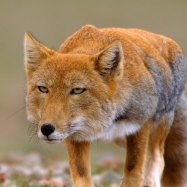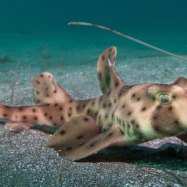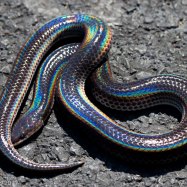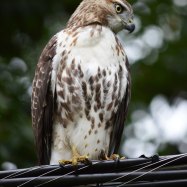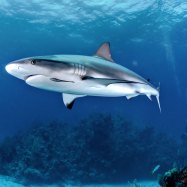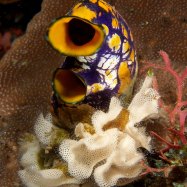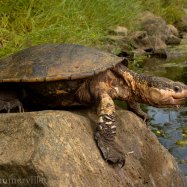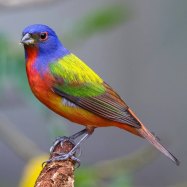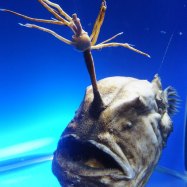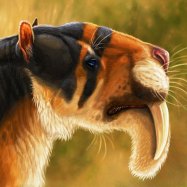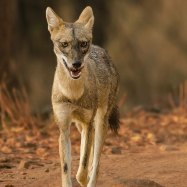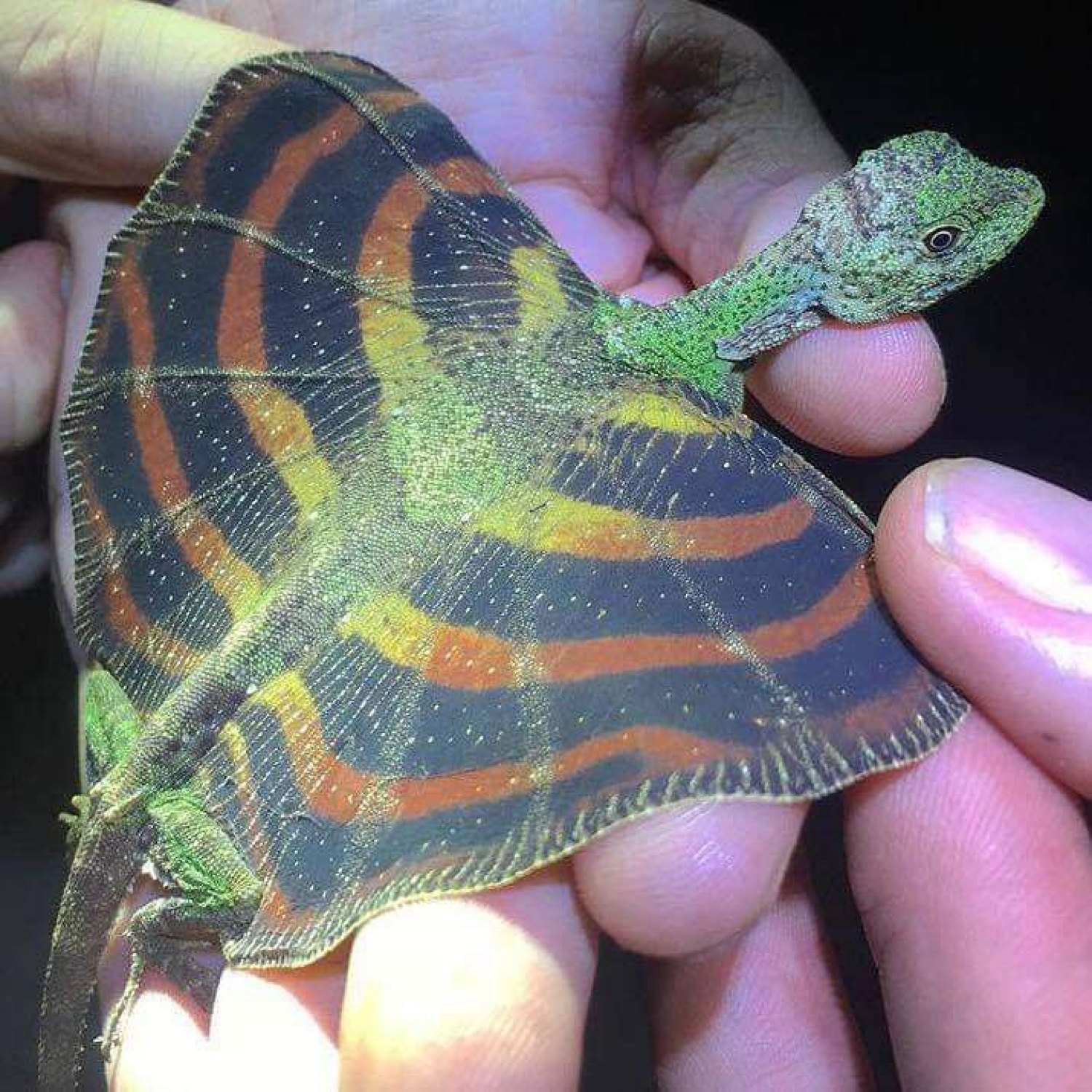
Draco Volans Lizard
20-25 cm
Meet the Draco Volans Lizard, also known as the flying dragon. This remarkable creature can be found in Southeast Asia's lush rainforests, with a slender body and wings that allow it to glide through the trees. At a length of 20-25 cm, it may be small but it packs a powerful presence in the Agamidae family of reptiles. With its impressive body shape, the Draco Volans Lizard truly lives up to its majestic name.
Animal Details Summary:
Common Name: Flying Dragon
Kingdom: Animalia
Habitat: Rainforests
The Amazing Draco Volans: The Real-Life Flying Dragon
Dragons have always been a captivating and mystical creature in the realm of fantasy and mythology. Their majestic appearance and legendary abilities have piqued the curiosity and imagination of people for centuries. Stories of these mythical beasts often depict them as powerful, awe-inspiring creatures that can breathe fire and fly through the skies. But what if we told you that there is a real-life version of a flying dragon found in the rainforests of Southeast Asia? Meet the incredible Draco volans, commonly known as the flying dragon, one of nature's most fascinating creatures Draco Volans Lizard.Origin and Habitat
The Draco volans can be found in the tropical rainforests of Southeast Asia, particularly in countries like Indonesia, Malaysia, Philippines, Singapore, Thailand, and Vietnam. They have adapted well to the humid and dense environment of these rainforests, making them elusive and challenging to study in the wild.Description and Features
At first glance, the Draco volans may seem like an ordinary lizard. However, upon further inspection, you will realize that this unique creature possesses extraordinary qualities that set it apart from other lizards. The scientific name "Draco volans" translates to "flying dragon" in Latin, which accurately describes its most remarkable feature - its ability to glide through the air.The body of the Draco volans is slender and elongated, measuring around 20-25 cm in length. They have a small head, a long tail, and four limbs that are equipped with claws for climbing and gripping on to branches. But what truly sets them apart is their long and slender wings that are supported by ribs and elongated cartilage. Their wingspan can reach up to 30-35 cm, allowing them to glide up to 60 meters in distance Deer. The wings are a combination of skin and scales, making them lightweight and flexible, perfect for flight.
Feeding Habits
As carnivorous creatures, the Draco volans has a diet primarily composed of insects, such as ants and termites. They are also known to feed on spiders and other small invertebrates found in their habitat. Their small size and agility allow them to hunt and capture prey efficiently.Behavior and Adaptations
The Draco volans has several unique adaptations that allow them to thrive in their environment. Their slender body and long tail make it easier for them to navigate through the dense vegetation of the rainforest. They are also capable of changing colors to blend in with their surroundings, making them difficult to spot by predators.Their most impressive adaptation, however, is their ability to glide. Unlike other gliding animals, such as squirrels and flying squirrels, the Draco volans does not have any special organs or flaps that aid in gliding. Instead, they use the patagium, a membrane of skin between their ribs, to catch the air and glide from one tree to another. This membrane also allows them to steer and control their flight, similar to a parachute.
Apart from their gliding abilities, the Draco volans also has an extraordinary capability to stick to vertical surfaces. This is due to their modified toes that have tiny pads with adhesive properties, allowing them to cling to smooth surfaces. This adaptation also helps them evade predators and move efficiently in their habitat.
Despite being solitary creatures, the Draco volans has developed a unique way of communicating with other members of their species. They make use of body movements, such as head bobs and dewlap extensions, to signal to other lizards and establish their territory.
Conservation Status
Unfortunately, the Draco volans is facing threats in its natural habitat. The destruction of rainforests to make way for agriculture and urbanization has resulted in the loss of suitable habitats for these lizards. Due to their elusive nature, it is challenging for scientists to gather reliable population data. However, it is believed that their population has significantly declined in recent years.To protect and preserve this fascinating species, several conservation efforts have been put in place. Some countries, such as Thailand and Indonesia, have designated protected areas for the Draco volans. Public awareness and education campaigns are also essential in promoting the conservation of this elusive creature.
A Real-Life Flying Dragon
The Draco volans may not breathe fire or have magical powers, but its ability to glide through the air makes it a real-life flying dragon in our world. Its unique adaptations and behaviors have fascinated scientists for years, and there is still much to learn about this remarkable creature.As technology and our understanding of nature continue to advance, who knows what other creatures and abilities we may discover in the rainforests of Southeast Asia. But for now, the Draco volans remains as one of the most extraordinary creatures in the animal kingdom, defying gravity and capturing our imagination as the real-life flying dragon.

Draco Volans Lizard
Animal Details Draco Volans Lizard - Scientific Name: Draco volans
- Category: Animals D
- Scientific Name: Draco volans
- Common Name: Flying Dragon
- Kingdom: Animalia
- Phylum: Chordata
- Class: Reptilia
- Order: Squamata
- Family: Agamidae
- Habitat: Rainforests
- Feeding Method: Carnivorous
- Geographical Distribution: Southeast Asia
- Country of Origin: Indonesia, Malaysia, Philippines, Singapore, Thailand, Vietnam
- Location: Can be found in the tropical rainforests of Southeast Asia
- Animal Coloration: Black or brown with yellow markings
- Body Shape: Slender and elongated body with long and slender wings
- Length: 20-25 cm
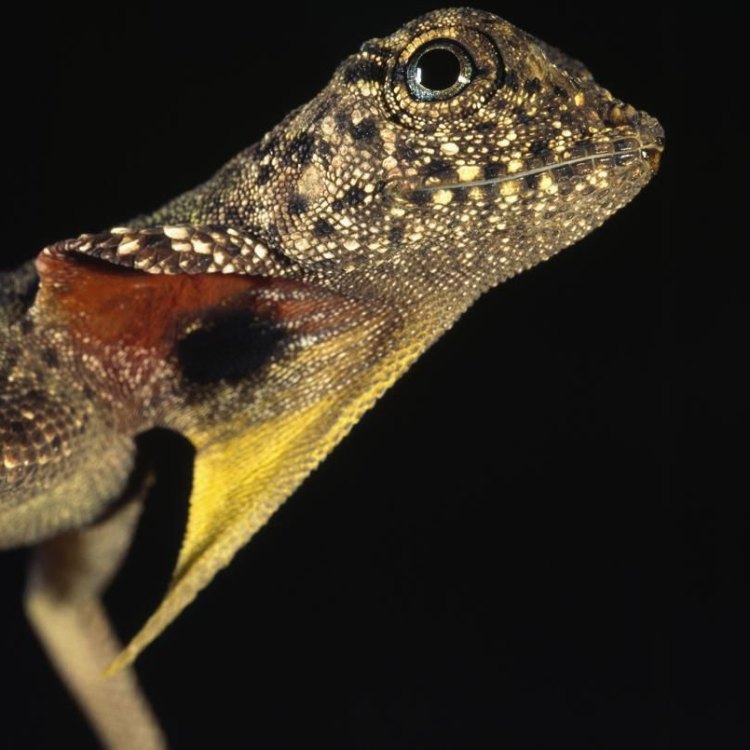
Flying Dragon
- Adult Size: Medium-sized lizard
- Average Lifespan: 4-5 years
- Reproduction: Oviparous
- Reproductive Behavior: Males establish territories and perform aerial displays to attract females
- Sound or Call: Males produce a unique call during courtship
- Migration Pattern: No distinct migration pattern
- Social Groups: Solitary
- Behavior: Mainly arboreal and spends most of its time in trees
- Threats: Habitat loss and fragmentation, deforestation
- Conservation Status: Least Concern
- Impact on Ecosystem: Pollination and seed dispersal
- Human Use: Not used by humans
- Distinctive Features: Long, wing-like patagia (extended ribs) that enable gliding
- Interesting Facts: Draco volans is capable of gliding for distances up to 30 meters
- Predator: Snakes, birds of prey, and larger lizards
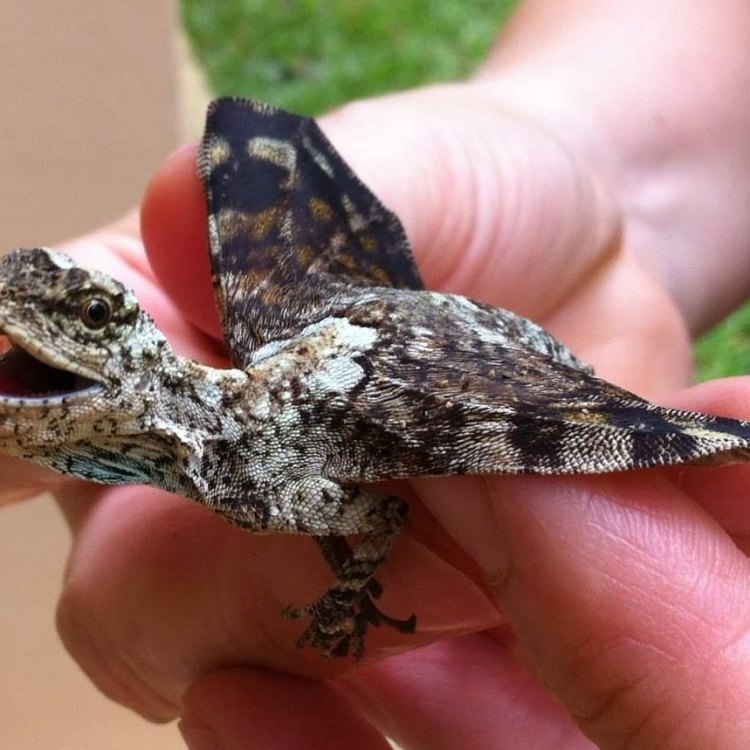
Draco volans
The Unique and Fascinating Draco Volans Lizard: Secrets of the Gliding Lizard Revealed
The animal kingdom is full of fascinating creatures, from the massive elephants to the tiny ants. One such remarkable creature is the Draco Volans Lizard, also known as the Flying Dragon Lizard. This medium-sized lizard with its wing-like patagia (extended ribs) can glide through the air, a unique ability that has captured the curiosity of many.In this article, we will delve into the world of Draco Volans Lizard and uncover the secrets behind its gliding abilities PeaceOfAnimals.Com. From its physical characteristics to its behavior, threats, and impact on the ecosystem, this article will provide a comprehensive understanding of this remarkable creature.
Meet the Draco Volans Lizard
The Draco Volans Lizard, also known as the Flying Dragon Lizard, is a medium-sized lizard found in Southeast Asia, including Indonesia, Malaysia, and the Philippines. It belongs to the genus Draco, which consists of small-bodied lizards with various adaptations for gliding.The name "draco" comes from the Greek word for dragon, and volans is a Latin word meaning "flying." Together, they aptly describe the unique abilities of this lizard.
The Medium-Sized Marvel: Adult Size and Average Lifespan
The Draco Volans Lizard is a medium-sized lizard, with an average body length of 8-9 inches, not including its tail. Its wingspan, which is formed by the elongated ribs, can reach up to 9-12 inches. It weighs between 4-6 grams, making it extremely lightweight for its gliding abilities.On average, these lizards have a lifespan of 4-5 years in the wild Dusky Dolphin. However, in captivity, they can live up to 8 years, making them popular pets among lizard enthusiasts.
The Reproductive Behavior of the Draco Volans Lizard
Draco Volans Lizards are oviparous, meaning they lay eggs rather than giving birth to live young. Breeding usually takes place during the rainy season, between June and September in Southeast Asia.During breeding season, males establish territories and perform aerial displays to attract females. They extend their wings and flutter them in a distinctive way while producing a unique call to attract potential mates. This display is known as "parachuting."
Mating takes place on tree branches, and after a successful copulation, females will lay 2-5 eggs in a tree cavity or under loose bark. The eggs are carefully guarded by the mother until they hatch after 6-8 weeks.
The Distinctive Call of the Draco Volans Lizard
The males of the species produce a unique call during the breeding season, which has been described as a series of high-pitched, squealing notes. This call is used to attract potential mates and can be heard up to 10 meters away.Interestingly, studies have shown that the lizards' calls are individually distinct, making them capable of recognizing each other by their unique calls.
Migration Patterns and Social Groups
Unlike many other animal species, the Draco Volans Lizard does not exhibit a distinct migration pattern. They are known to remain in their designated territories throughout their entire lifespan.These lizards are solitary creatures, and they only come into contact with other lizards during the breeding season. After mating, they will return to their solitary lifestyle.
The Unique Behavior of the Draco Volans Lizard
The Draco Volans Lizard's most unique and fascinating behavior is its ability to glide through the air. Unlike flying, gliding is a controlled fall, and these lizards use their "wings" to steer and slow down their descent.Apart from gliding, these lizards are mainly arboreal, meaning they spend most of their time in trees. Their wings allow them to move smoothly from branch to branch, making them agile and efficient climbers.
In addition to their gliding abilities, these lizards are also known for basking in the sun. They will extend their wings to absorb heat, which is essential for regulating their body temperature.
The Threats Facing the Draco Volans Lizard
While the Draco Volans Lizard may seem like a magnificent creature, its population is facing several threats. The biggest threat is habitat loss and fragmentation due to deforestation. These lizards rely on trees for their survival, so the destruction of their habitat directly impacts their population.Furthermore, as these lizards are solitary creatures, they require a significant amount of territory to thrive. Deforestation and human activities lead to the fragmentation of their habitat, making it challenging for them to find suitable trees to live in.
Conservation Status and Impact on the Ecosystem
The Draco Volans Lizard is listed as Least Concern on the IUCN Red List, meaning it is not at immediate risk of extinction. However, this does not mean that their population is not facing threats. Habitat loss and fragmentation continue to be a major concern for these lizards, and if not addressed, it could lead to a decline in their population.In addition, the Draco Volans Lizard has a significant impact on the ecosystem. As they are arboreal creatures, they play a vital role in pollination and seed dispersal, contributing to the health and diversity of the forests they inhabit.
Their gliding abilities also help in seed dispersal, as they can travel distances up to 30 meters while gliding. This facilitates the spread of plant species and helps maintain a balanced ecosystem.
The Human Use of the Draco Volans Lizard
Fortunately, the Draco Volans Lizard is not used by humans for any purposes. While some may keep them as pets, these lizards are not suitable for captivity and do not make good pets. They require specialized care and need to be kept in large, well-ventilated enclosures.Moreover, it is not legal to import or export these lizards for the pet trade in most countries, as they are protected by various laws and regulations.
The Unique Features of the Draco Volans Lizard
The most distinctive feature of the Draco Volans Lizard is its long wing-like patagia, which enables it to glide through the air. These extended ribs are supported by thin membranes, giving the lizard a kite-like appearance when it spreads its wings.Another unique characteristic is that these lizards are capable of gliding for distances up to 30 meters. They can control their gliding direction and speed by changing the shape of their wings to catch the air currents.
Predators of the Draco Volans Lizard
Despite their impressive gliding abilities, the Draco Volans Lizard is not invincible. They have predators in the wild, including snakes, birds of prey, and larger lizards. In order to escape from these predators, these lizards will often take to the air and glide to a safe location.One study even found that these lizards will sometimes intentionally fall off a tree and glide away when they feel threatened. This tactic allows them to avoid any potential harm from predators.
The Importance of Protecting the Draco Volans Lizard
The Draco Volans Lizard may not be as well-known as other animals, but its unique abilities and impact on the ecosystem make it a crucial species to protect. Habitat conservation efforts, strict laws and regulations against deforestation, and educating the public about the importance of these lizards are necessary steps to ensure their survival.Moreover, preserving the Draco Volans Lizard is vital for maintaining a healthy and balanced ecosystem. Without these lizards, the pollination and seed dispersal that they facilitate may decline, leading to a significant impact on the environment.
Conclusion
In conclusion, the Draco Volans Lizard is a truly remarkable creature with its gliding abilities and distinctive features. Despite facing threats from habitat loss and fragmentation, these lizards continue to fascinate and intrigue us with their unique behavior and role in the ecosystem.As more research and conservation efforts are directed towards this species, we will continue to learn more about the secrets of the gliding lizard, and hopefully, ensure its survival for generations to come. So the next time you spot a flying dragon lizard in the forest, take a moment to appreciate its uniqueness and play your part in protecting these amazing creatures.
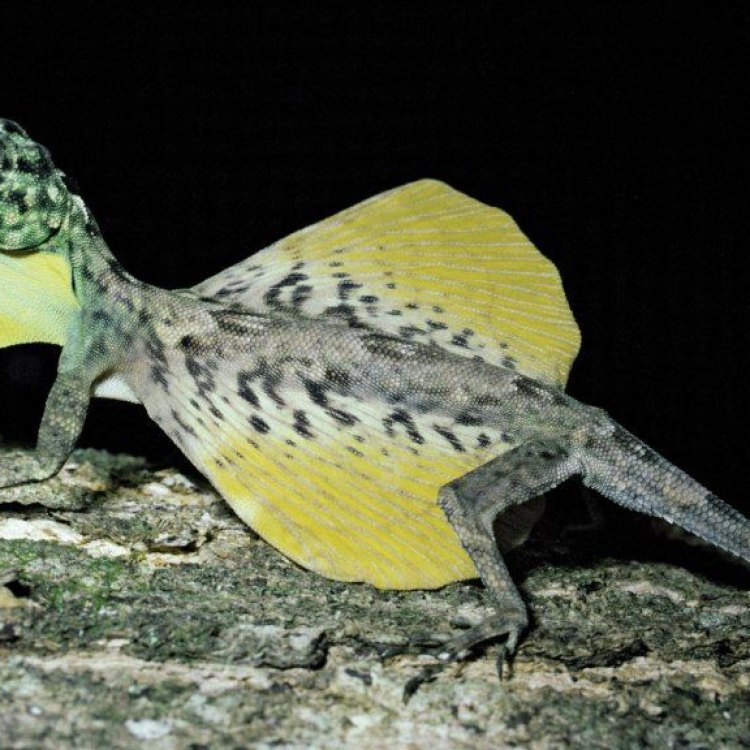
The Amazing Draco Volans: The Real-Life Flying Dragon
Disclaimer: The content provided is for informational purposes only. We cannot guarantee the accuracy of the information on this page 100%. All information provided here may change without prior notice.

